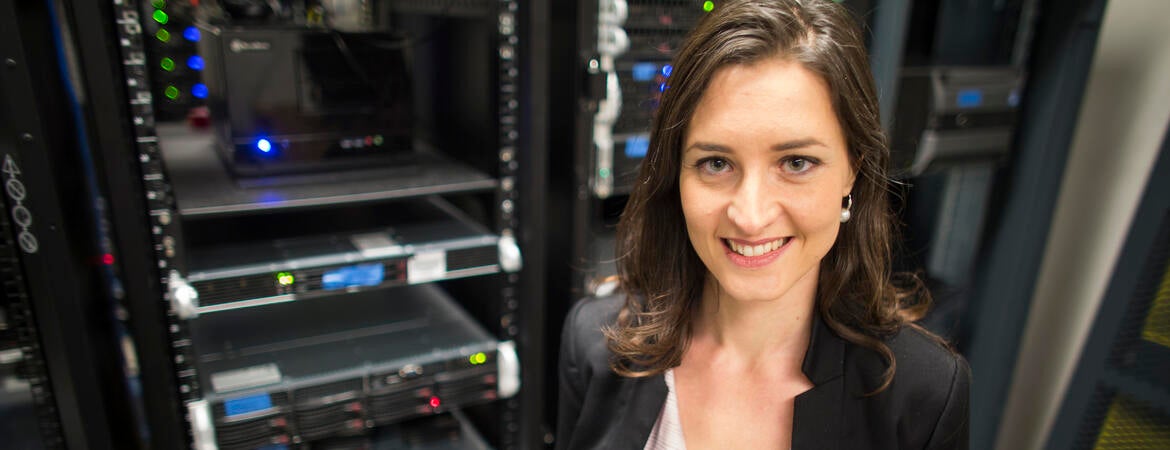
Professor Giulia Palermo has been awarded a 3-year $150,000 NSF grant to mechanistically investigate DNA cleavage and specificity in CRISPR-Cas9. The award is through Chemistry of Life Processes Program in the Chemistry Division of NSF.
(From the NSF award summary page)
With this award, the Chemistry of Life Processes Program in the Chemistry Division is funding Dr. Giulia Palermo from the University of California, Riverside, to investigate the molecular basis of DNA cleavage and specificity in the CRISPR (clustered regularly interspaced short palindromic repeat)-Cas9 system through computational methods. The CRISPR-Cas9 technology is a method that makes precise modification of the genome of an organism (including that of humans) possible. The technology is based on the use of a nuclease, an enzyme capable of cutting the double stranded DNA, and an RNA molecule that is bound to the enzyme and guides the enzyme to the site in the DNA where the cut is to take place. This research seeks to understand the mechanism by which the enzyme functions using computational methods developed by Dr. Palermo and her collaborators. The results of this study may aid in the development of more efficient genome editing technologies and their applications in biological research, biofuels production, and the development of drought-resistant crops with enhanced nutritional value. The project involves an outreach and mentoring program, which includes hands-on sessions for high school students from underrepresented minority groups and teachers.
CRISPR-Cas9 is a bacterial adaptive immune system that is revolutionizing basic and applied life sciences by enabling a facile genome editing technology. This project provides detailed understanding of how this system edits and manipulates nucleic acids, which is of importance for improving the genome editing capability. This research project seeks to characterize the mechanism of DNA cleavage and specificity of the Streptococcus Pyogenes (Sp) CRISPR-Cas9 system by using state-of-the-art computational methods. The project employs a mixed quantum mechanics/molecular mechanics (QM/MM) approach and ab-initio Molecular Dynamics (MD) simulations (using the Born-Oppenheimer and Car-Parrinello approaches) in combination with free energy methods to investigate the catalytic mechanism of DNA cleavage in CRISPR-Cas9. These methodologies may elucidate the catalytic role of metal ions, which are critical for the enzymatic processing of DNA. Classical MD and enhanced sampling techniques are employed to investigate the mechanism of DNA specificity, characterizing the conformational changes arising from the binding of altered DNA sequences and how they affect the catalysis. Theoretical investigations are performed in collaboration with experimentalists. The new theory assists in the interpretation of experimental data and makes possible predictions that can be tested in the laboratory.